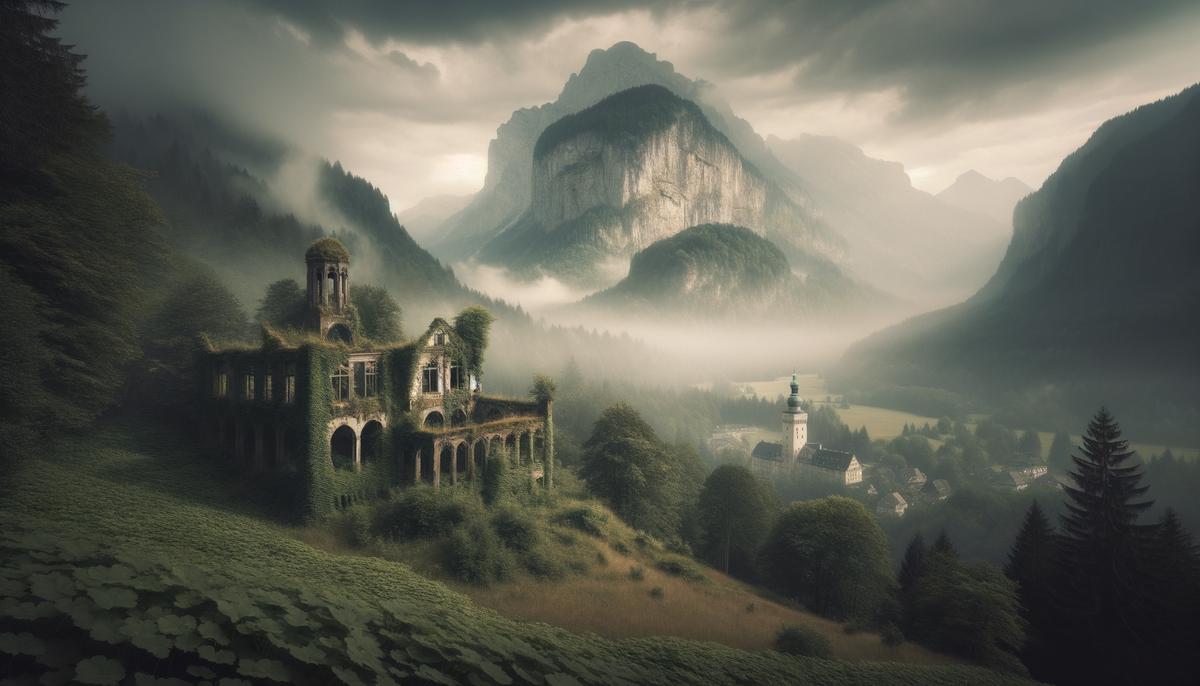Berchtesgaden, a town nestled in the Bavarian Alps, carries the weight of a troubled history. Its serene landscapes contrast sharply with the dark memories of World War II, where Nazi leaders once plotted their ominous plans. This article explores the remnants of that past, examining both the physical ruins and the ghostly tales that linger in the air.
Historical Background of Berchtesgaden
Berchtesgaden, a picturesque mountain town in Bavaria, Germany, once served as a significant backdrop for the dark chapters of World War II. Nazi leader Adolf Hitler's Berghof, nestled halfway up the Obersalzberg mountain, was the epicenter of many sinister plans. This residence, damaged by bombing and later dynamited by U.S. forces, now holds a solitary greyish stone wall, a silent fragment of its infamous past. Much of this evidence of history remains unmarked, with no signposts pointing the way, reflecting Germany's continued struggle in dealing with its Nazi legacy.
While the Berghof has receded into ambiguity, the nearby Eagle's Nest, a mountaintop lodge known as Kehlsteinhaus, stands prominently. It attracts countless visitors annually, driven by both historical curiosity and the stunning views of peaks and valleys. Gifted to Hitler on his 50th birthday, this lofty retreat is now a café and restaurant, though it saw little of its unstable owner due to his fear of heights.
The stories of Berchtesgaden stir mixed feelings among historians and locals. Axel Drecoll, overseeing the local documentation center that draws 160,000 people each year, worries about the thin line between educational curiosity and morbid sensationalism. Newspapers once reported a "Hitler holiday," leading to public outrage, only to reveal most tourists were genuine history buffs, not neo-Nazis.
Around the Berghof, unsanctioned tributes occasionally appear on Hitler's birthday or the anniversary of his death. The documentation center staff promptly removes these items, emphasizing that the real risk lies not in radical memorials but in blurring the divide between meaningful historical enquiry and kitschy commercialism.
Ingrid Scharfenberg, who manages the Zum Tuerken guest house, one of the few original buildings left, feels unjustly tethered to the past. People label the area and its inhabitants as Nazis, a generalization she deems unfair. After World War II ended, the U.S. military transformed the area into a recreational site for soldiers, further obscuring its dark history. They officially handed it back to the Bavarian government in 1995, leading to a gradual cleanup of the ruins.
Egon Johannes Greipl, leading Bavaria's Office for Ancient Monument Preservation, argues for a restoration of the preservation order that was lifted in 1995. In his view, the ruins on Obersalzberg are valuable historical evidence. Opponents, however, fear that preserving these remains invites neo-Nazi pilgrimages and taints local tourism with its horrific past.
Charlotte Knobloch from the Jewish association in Munich stands against preservation, as does Bavarian justice ministry official Walter Schoen. They believe that maintaining these ruins wouldn't offer meaningful testimony and could transform the area into a grim tourist trail.
Berchtesgaden, grappling with its haunted past, embodies Germany's broader struggle to reconcile with its history. The conflict between remembering and forgetting, educating without sensationalizing, looms large in every stone and story of this poignant locale.
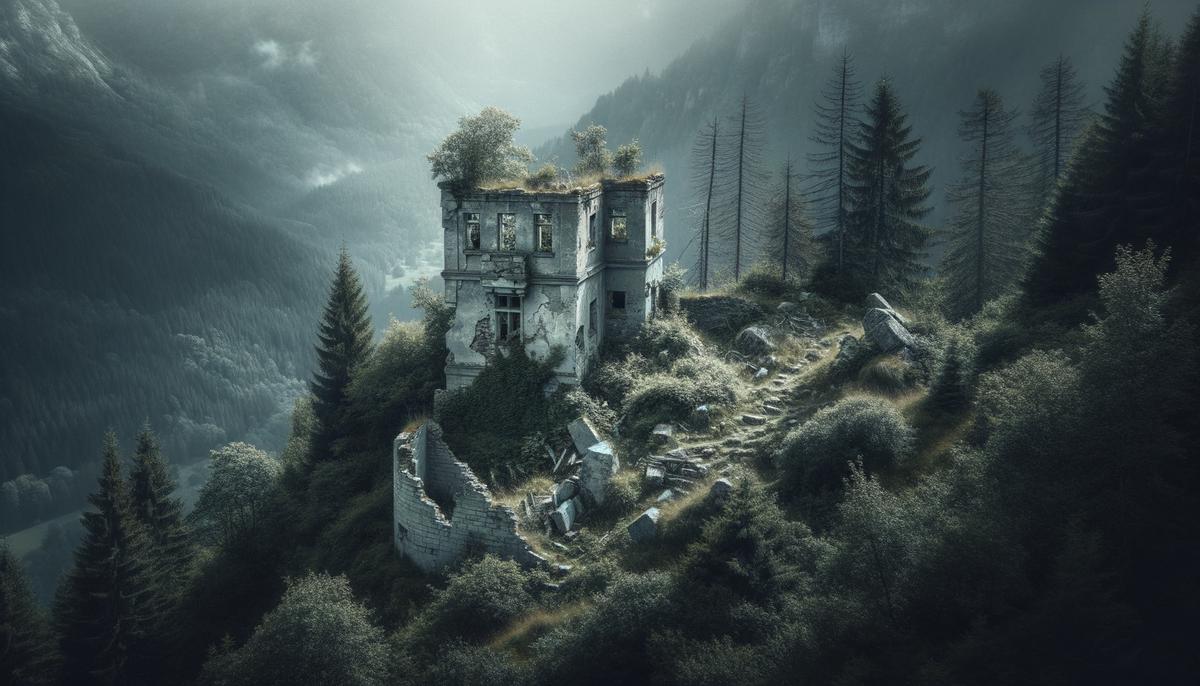
The Berghof and Its Haunting
The Berghof, now reduced to a few crumbling stones amidst the Bavarian pines, seems to draw more than just casual hikers and mountain bikers. Despite its decay and the lack of indicators, whispered tales of ghostly occurrences circulate. It's as if the heavy aura of its past lingers still, refusing to be erased by time or human efforts.
Some claim that on quiet nights, when the wind carries a cold bite, they can hear whispers – not just any whispers, but frantic conversations in German, the language of its erstwhile occupants. This isn't frequent but those who have experienced it attest to a chill that settles deep within, distinct from the alpine cold.
Bizarre sightings aren't entirely dismissed either. Locals narrate tales of shadowy figures seen out of the corner of the eye, only for them to vanish upon a second look. These apparitions are described diversely:
- Some whisper of Hitler, clad in military attire
- Others speak of indistinct forms hovering near the remnants of old fire pits
- A few report seeing what appear to be lost soldiers or servants from a bygone era
These spectral sightings have understandably invited controversy. Historian Axel Drecoll and his documentation center often find themselves at the crossroads of fascinated curiosity and ethical dilemmas. How does one balance genuine historical interest and the risk of turning this place into a ghostly attraction? It's a tightrope walk, all the more pressing as the lines between historical reflection and macabre entertainment blur.
The locals harbor mixed feelings. Ingrid Scharfenberg, with her view of the decayed Berghof against the lush Bavarian backdrop, often encounters tourists with probing questions about the paranormal. She feels an uneasy blend of resentment and resignation, trapped in a loop where her home is an unwilling exhibit, not just of history but of lingering suspicions of dark inheritances.
Whether real or a manifestation of collective guilt and memory, these ghostly tales continue to haunt the periphery of awareness. For some, these ghost stories bring an unsettling reminder of history's darkest chapters. For others, it is a poignant reminder of the resilience required to walk the fine line between remembering and moving on.
Walking through the ruins of Berghof with the pine-scented air swirling, the weight of history seems almost palpable. It's a place where echoes of the past refuse to be silenced, where the spirits – real or imagined – stand as stern sentinels against forgetfulness.
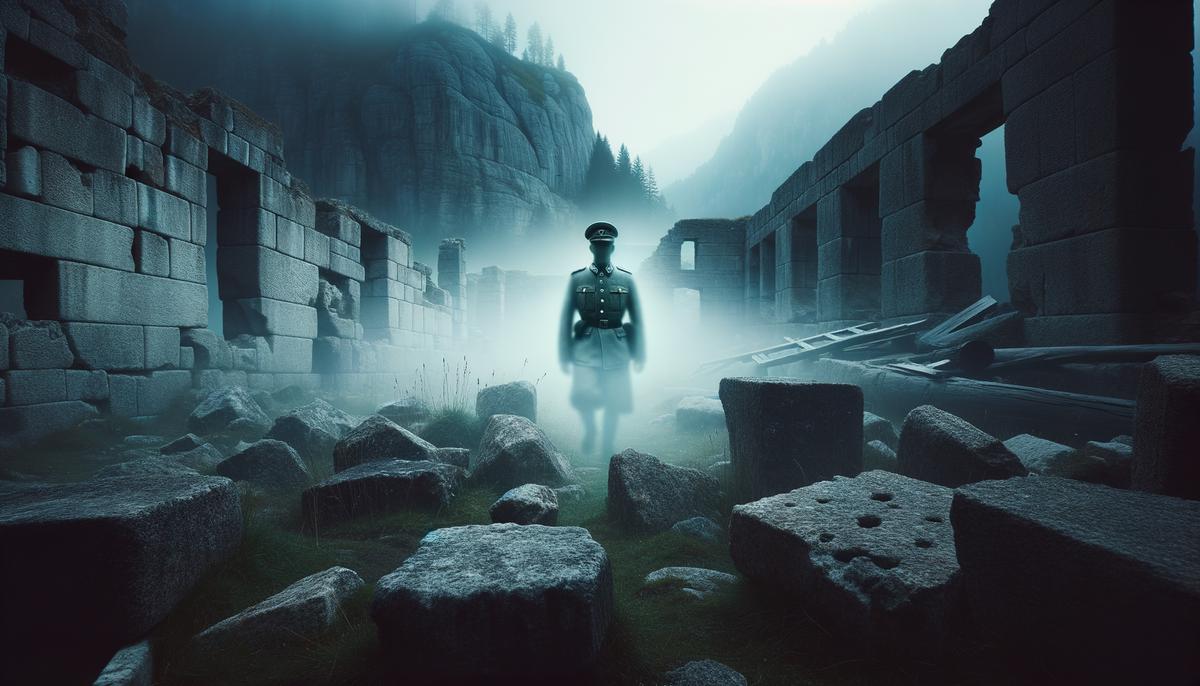
Eagle's Nest: A Haunted Tea House?
The Eagle's Nest, an opulent mountain-top lodge gifted to Hitler on his 50th birthday, stands in stark contrast to the decayed Berghof below. Perched at 1,800 meters (5,900 feet) above sea level and offering breathtaking views of the German and Austrian Alps, it is a place where nature's beauty intersects with a past shrouded in darkness. Now a bustling tourist attraction, the tea house-turned-restaurant feeds more than just hungry visitors – it feeds their curiosity about the site's macabre associations.
Unlike the cryptic and crumbling Berghof, the Eagle's Nest is well-preserved, maintained as a historical site with a culinary twist. Tens of thousands of visitors brave the vertigo-inducing road to the summit annually, driven not only by the promise of panoramic views but also by the chilling thrill of walking where Hitler and his confidants once strode. Yet, beneath the veneer of a popular dining location lies an undercurrent of unease.
Curiously, reports of paranormal activity at the Eagle's Nest are sparse yet unsettling. Accounts from staff and visitors speak occasionally of:
- Fleeting shadows
- Inexplicable cold spots, even on the sunniest of days
- Echoes of muffled conversations in languages other than those spoken by present-day tourists
The historians and curators managing the Eagle's Nest face a familiar balancing act. The goal, as Axel Drecoll from the documentation center near Berghof articulated, is to "satisfy the curiosity of the tourists without pandering to sensationalism." This effort involves threading a delicate needle, providing historical context without glossing over the sinister undertones of its past, yet avoiding a reduction of the space into mere ghostly gimmicks.
This struggle becomes all the more apparent when steps are taken to discourage Nazi enthusiasts from treating the site as a shrine. Despite its transformation into a place of relaxation and reflection, the historical architecture remains untouched, reminding visitors of its original intent. Books recounting Hitler's reign might be confined to the library, but the weight of history hangs visibly in the air, a tangible reminder of its former occupants.
"There's an odd comfort in converting Hitler's place of retreat into a bastion of remembrance and reflection, yet combined with a morbid fascination that fuels questions whispered amongst visitors."
Beyond the paranormal, there's a subtle, pervasive atmosphere at the Eagle's Nest. People journey not only to relive history but also to experience the unease that comes with inhabiting spaces that once hosted heinous plots.
Thus, the Eagle's Nest stands as a prime example of a historical site where the past and present clash and coalesce. It resists sinking entirely into oblivion due to its spectral tales and continues to provoke discourse on how we navigate the treacherous grounds between honoring history and avoiding macabre commercialization.
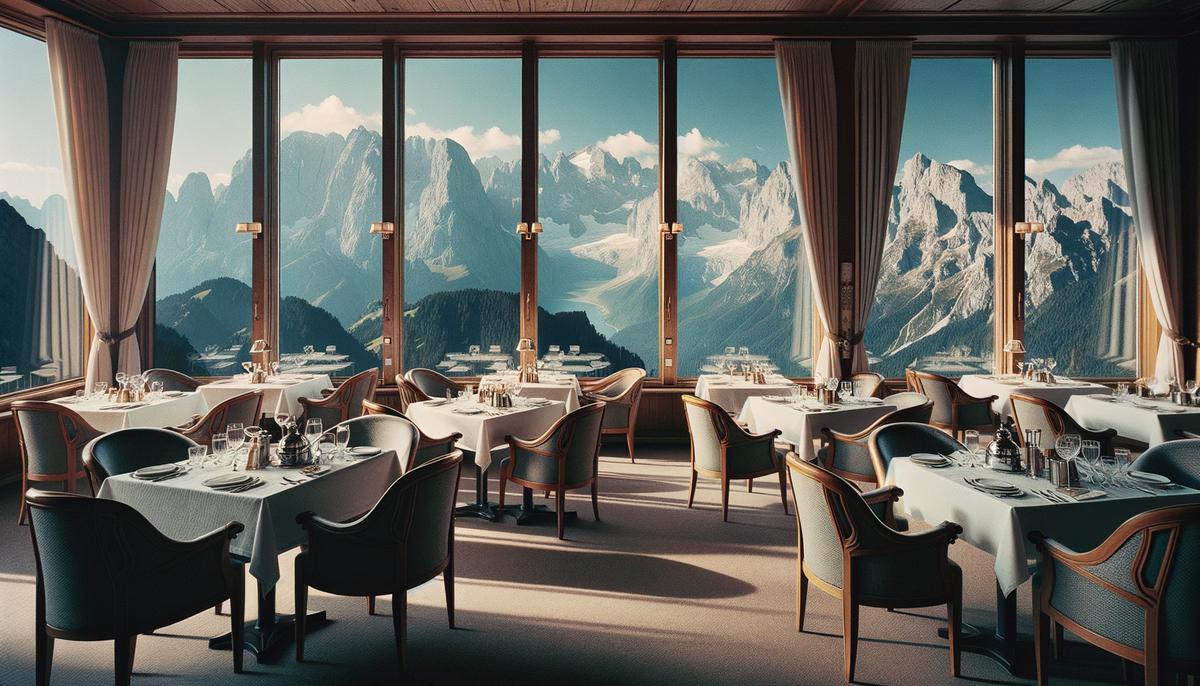
Local Legends and Modern Encounters
Berchtesgaden's web of legends and contemporary encounters adds to the mystique of this historic locale. Local folklore often intertwines with the chilling history of the area, creating fertile ground for ghost stories that captivate both visitors and residents.
The tale of the "Schwarzseher" or "Black Seer" is particularly eerie. This mysterious figure is said to inhabit the shadowy outskirts of the forested Obersalzberg. Described as a tall, cloaked figure with piercing eyes, the Black Seer reportedly appears on moonless nights. Those who claim to have encountered him describe an unnerving feeling of being watched, followed by whispered warnings in archaic German. Some believe he was once a Nazi officer who perished after WWII, now condemned to roam the woods.
Recent encounters have fueled this legend. Hikers and guides report seeing shadowy figures at dusk, darting between trees. Visitors claim to have seen old-fashioned lantern lights moving through the forest, only to find nothing upon closer inspection. These experiences, whether real or imagined, have cemented the Schwarzseher's place in local lore.
Other Supernatural Entities
- Ghostly apparitions in WWII-era clothing
- A vanishing soldier in a local inn
- Witches gathering in surrounding forests on Walpurgisnacht
These legends have shaped the community's perception of the area. While they attract curious tourists, some residents feel frustrated. Living in a place where the past looms heavily can be burdensome, with some yearning for Berchtesgaden to be known more for its natural beauty than its spectral associations.
Nevertheless, the legends endure, reflecting the collective psyche of a town striving to balance remembrance with reinvention. They speak to humanity's fascination with the unknown and the eerie thrill of what lies beyond the veil.
As night falls in Berchtesgaden and history whispers through the ancient pines, it's hard not to feel the weight of unseen eyes watching. Whether real or imagined, the spirits of Berchtesgaden weave haunting tales that continue to captivate those who dare to listen.
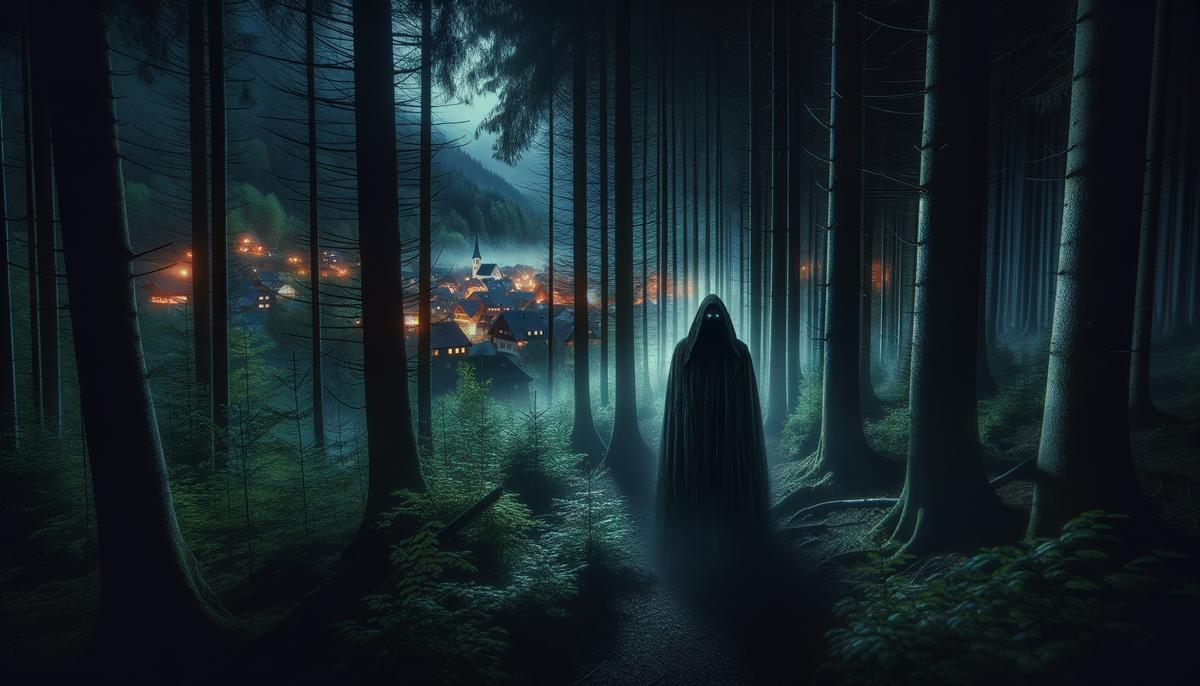
Ethical Considerations in Ghost Tourism
Ghost tourism in Berchtesgaden creates a paradox, straddling the line between historical reflection and commercial exploitation. The ethical implications of transforming a site with dark memories into a haunted tourist attraction are significant, provoking concerns from historians, locals, and visitors alike.
The ghost stories and spectral sightings attract countless visitors, offering an engaging gateway into history. However, they risk trivializing the somber realities of a town steeped in the horrors of WWII and Hitler's regime.
Historians like Axel Drecoll, director of the local documentation center, stress the importance of maintaining a respectful and educational approach. Ghost tourism, if focused merely on spectacle, can distort the critical understanding of historical events, potentially leading audiences away from important lessons.
Impact on the Local Community
- Residents feel the weight of history
- Daily influx of visitors more intrigued by chilling tales than cultural heritage
- Spectral focus perpetuates grim associations
- Overshadows community's attempts to move beyond its dark past
Exploiting Berchtesgaden's haunted history for tourism risks fostering a skewed perspective that might inadvertently appeal to extreme elements. Neo-Nazi groups, albeit a minority, have shown a disturbing tendency to memorialize sites associated with Hitler. Transforming places like the Berghof or the Eagle's Nest into popular ghost tourism spots could potentially provide focal points for such perverse pilgrimages.
Efforts to imbue ghost tourism with ethical considerations include:
- Incorporating comprehensive historical tours
- Highlighting the atrocities of the Nazi regime
- Allowing for discussion of ghost stories within historical context
- Integrating locals' voices into the tourism narrative
- Focusing on resilience, remembrance, and natural beauty
Tourism authorities play a pivotal role in maintaining this ethical balance. Clear guidelines and oversight can ensure that the promotion of ghost tourism doesn't slip into gratuitous sensationalism. Collaboration between the documentation center, local historians, and tour operators can help preserve historical integrity even amidst tales of haunting.
Charlotte Knobloch's view, highlighting the risk of creating focal points for perverse memorials, underscores the necessity for a judicious approach. The current state of the Berghof as a barely marked pile of rubble arguably serves as a subtle reminder of its past horrors without inviting undue attention.
In essence, the ethical landscape of ghost tourism in Berchtesgaden demands a careful, respectful approach that prioritizes historical truth and community well-being over commercial gains. It's about finding a balance where the spirits of the past are acknowledged with gravity, not exploited for sensationalist appeal.
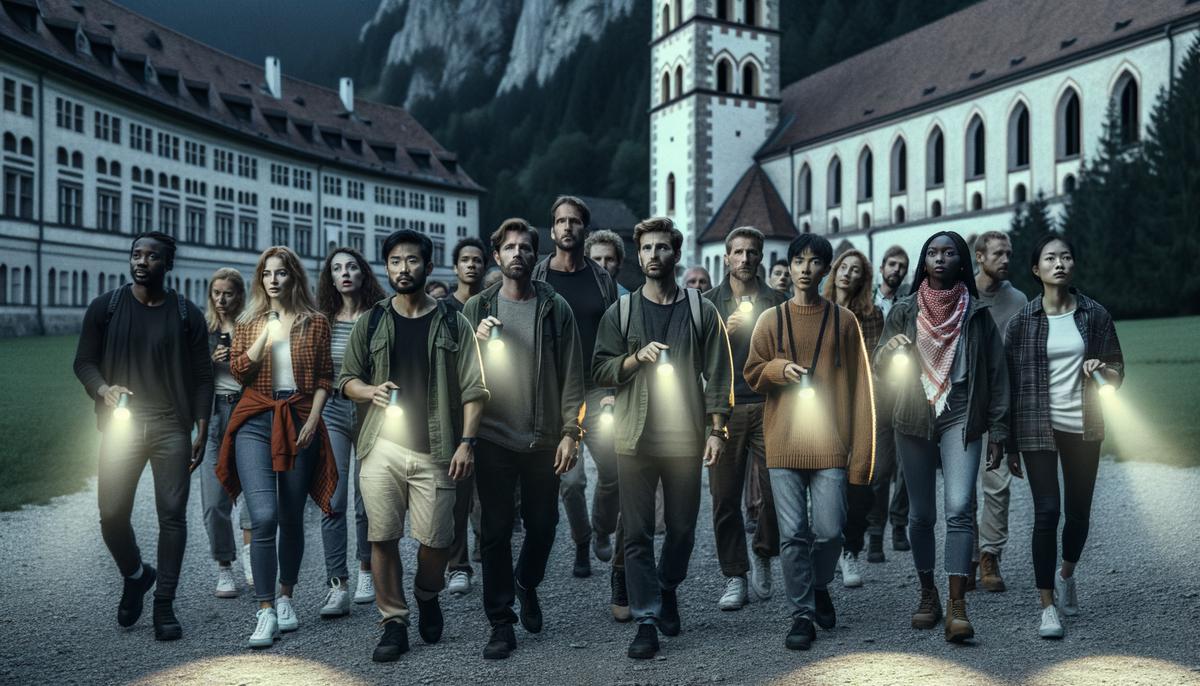
As you walk through Berchtesgaden, the echoes of history whisper through every stone and shadow. The haunting past of this town serves as a poignant reminder of the delicate balance between remembering and moving forward. Whether it's the spectral tales or the historical weight, Berchtesgaden continues to captivate and challenge those who visit.

